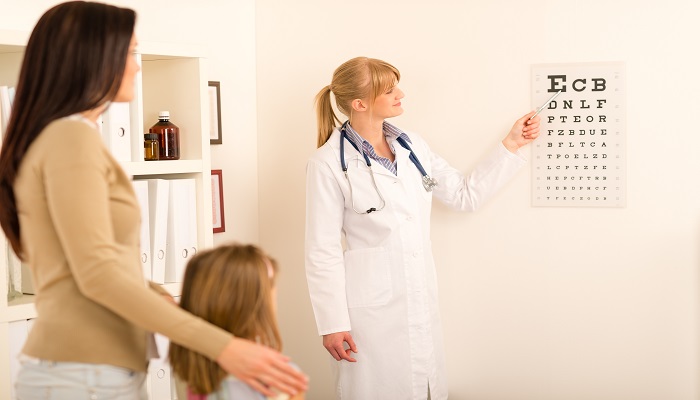

Visual impairment is a result of a functional loss of vision that are caused by eye disorders which include retinal degeneration, cataracts, glaucoma, albinism, and muscular problems resulting in visual disturbances, congenital disorders, corneal disorders, diabetic retinopathy, and infection.
According to a report published by American Printing House for the Blind (APH) in 2015, it was estimated that 61,739 school going children in the US are legally blind.

Partially Sighted It refers to some kind of visual problem where there is a need for special education.
Low Vision It normally refers to a severe visual impairment and it is not necessarily limited to distance vision. It applies to all those who are unable to read a newspaper at a normal distance despite the aid of contact lenses or eyeglasses.
Legally Blind It indicates that the person has 20/200 vision in the better eye which means a limited field of vision.
Completely Blind Completely blind preschoolers can be taught via braille or other non-visual media aid.
Characteristics
The impact of visual impairment on a preschooler's life depends on several factors such as age, type of severity, type of loss and overall function of a child's health. Children who suffer from multiple disabilities may also have visual impairments which cause cognitive, motor and/or social and developmental delays. A child who is visually impaired can't have the learning opportunities or the avenues available to other children who are healthy. Visual handicaps create obstacles in the development of the children and their independence.
Educational Help
Preschoolers with visual impairment need special care, additional help and some modifications in their regular school curriculum. The use of latest technology like low-vision optical and video aids will enable such children to participate in their regular class activities. Braille books, books on tape and large print materials are available to provide special educational aid to such children.
Early intervention is a system of services that includes therapies, education, and other support programs. It is the best way to support your child’s development and help them reach their full potential. Intervention services typically focus on helping your children learn basic skills they develop during the first three years of life, including cognitive development, sensory stimulation, motor skills, etc.
It includes teaching your child how to use all their senses (such as touch, feeling, smell, and sound) to identify their surroundings and where they are. Your children will also be taught to move around safely using mobility aids, such as canes, GPS devices, and mobile apps.
It's important to assess children with visual impairment early so they can benefit from early intervention programs at schools.